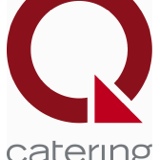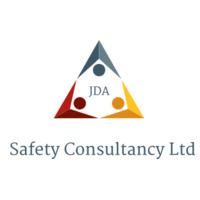Title Page
-
Name of Contractor
-
Define scale (size) of contractor. e.g. single operator, small business (2-5 staff) moderate business (5-15 staff) large business (16 + staff)
-
Outline of services provided
-
Conducted on
-
Prepared by
-
Location
Health and Safety Assessment – Tier 1 Contractors
Hazard identification and risk management
-
a. Is the Safety Risk Register contemporary and, reflect the activities of the contractor?
-
Detail anomalies or deficiencies?
-
b. Does your Safety Risk Register capture, prioritise high severity risks and incorporate (realistic) control measures to mitigate the risks?
-
Detail anomalies or deficiencies?
-
c. Are you; monitoring workplace safety issues by reviewing incident/hazard reports, ensuring incidents/hazards are reported and encouraging workers to provide feedback on safety issues?
-
d. Do you perform a risk assessment when there is a significant change or variation in your workplace or work task?
-
e. Do you regularly review and update your risk assessments, and where required, introduce new or additional control measures to mitigate identified risks?
-
Note: Consider whether your organisation continuously evaluates safety risk, adjusts control measures and implements preventive controls using the “hierarchy of control”.
2. Training competency and capability
-
a. Do your workers have the required licences, qualifications and/or skills for their assigned tasks?
-
b. Do you ensure that your workers qualifications and skills are kept up to date?
-
c. Do you maintain documentation or records to demonstrate the licences, qualifications and skills of your workers?
-
d. Are workers provided with information, instruction, training and supervision for the work being performed?
-
e. Do you have documented procedures that outline the work processes and provide guidance to workers?
-
f. Do you address identified training or knowledge gaps in your workforce?
-
g. Are records of training and competency assessments maintained. Do you track and document workers training activities?
3. Safety procedures policies and plans
-
a. Does your organisation have a documented Health and Safety Management Plan (HSMP)?
-
Is the HSMP contemporary with relevant legislation, regulation and standards and been reviewed in the past 3 years?
-
What aspects of the HSMP require updating?
-
b. Are your policies and procedures aligned with relevant legislation, regulations and/or standards?
-
Note: consider areas such as accident prevention, emergency response, hazard identification, risk assessment, and personal protective equipment (PPE)?
-
c. Are your workers aware of, and following your organisation’s safety policies and procedures?
-
d. During the onboarding process, does your organisation provide training/inductions sessions which introduce workers to your health and safety policies and procedures?
-
e. Do your Leaders and Managers demonstrate their commitment and monitor workers adherence to health and safety policies and procedures?
-
f. Is your system for reporting and investigating incidents and near misses being utilised by workers?
-
g. Do you assess incidents, near-miss and/or hazard reports submitted by your workers?
-
h. Do you have a process to ensure serious incidents and near misses are investigated?
-
i. Are you complying with the relevant Codes of Practice applicable to your organisation e.g., Fatigue Management for Commercial Vehicle Drivers, Managing the Risk of Falls in the workplace, etc.
-
What CoP or other documents require embedding or integration into business practices?
4. Incident investigation and corrective actions
-
a. In the past 2 years, have you had an incident, hazards or near miss that required a safety investigation and/or corrective actions to be implemented.
-
What was the nature of the incidents, hazards or near misses?
-
Did you implement corrective actions to prevent recurrence of similar event?
-
Why did you not implement corrective actions?
-
Were the corrective actions prioritised based on the potential effectiveness, feasibility, and urgency and plans developed outlining the specific actions to be taken?
-
Why were the corrective actions not prioritised?
-
c. Did you have any incidents and near misses related to RAC's operations?
-
Was the RAC made aware of the incident or near miss that related to RAC's operations?
5. Notification to Regulators
-
a. Have you had to report to WorkSafe an injury and/or dangerous incident as required under Part 3 of the Western Australian Work Health and Safety Act 2020?
-
Did you notified RAC of any matters notified to WorkSafe?
-
c. Have you received any infringements, improvement notices or enforceable undertakings issued by WorkSafe in the last 12 months?
-
Provide information in regard to the infringements, improvement notices or enforceable undertakings?
-
d. Have you been required to notify another regulator due to an incident related to work completed for, or on behalf of the RAC, e.g., Office of Energy?
-
Provide information in regard to the notification made to another regulator?
6. Where the following is a requirement of your contract with the RAC?
-
a. Have all personnel performing work on behalf of the RAC provided a national police clearance at the time of employment?
-
b. Do you have systems in place to identify and manage personnel who have a traffic or criminal conviction recorded against them since commencing employment?
-
c. Do all personnel required to drive have a current and valid Western Australian driver's licence required to operate the motor vehicle and / or equipment used to provide services? Yes/No/NA
7. Subcontractor management where applicable
-
a. Do you have processes in place to assess and manage the health and safety performance of your subcontractors?










